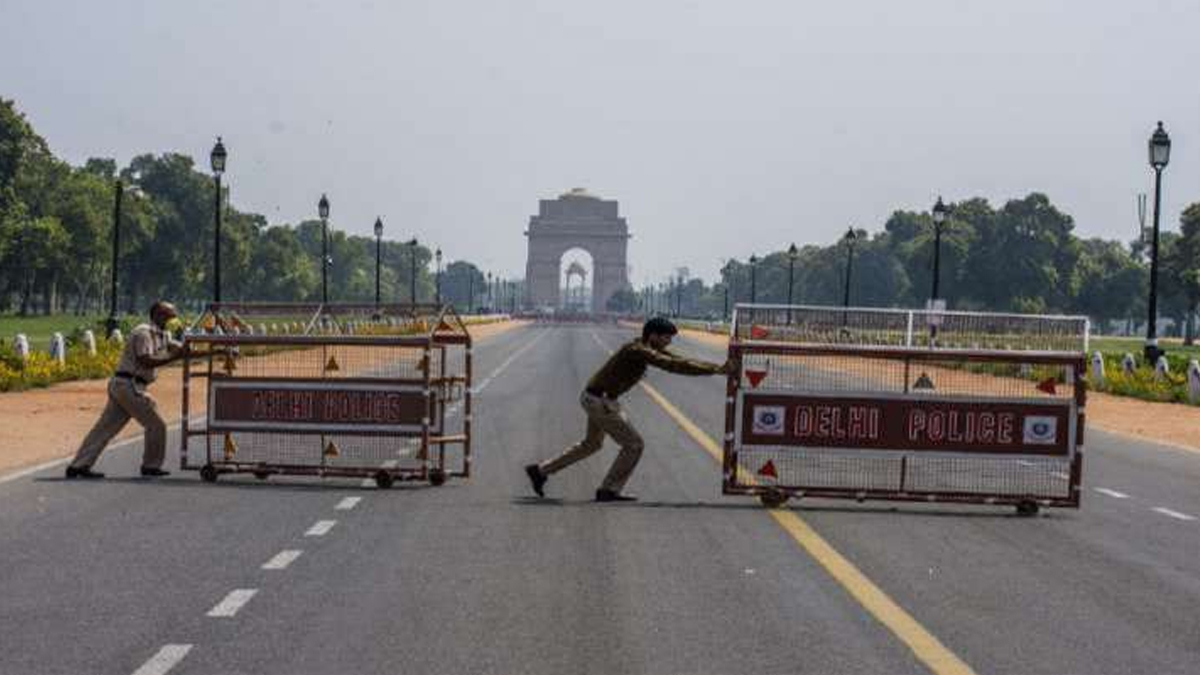


The Delhi Disaster Management Authority (DDMA) on Thursday decided to lift the weekend curfew and the odd-even market rules for shops in the national capital. The decision was taken after Lieutenant Governor Anil Baijal, along with Chief Minister Arvind Kejriwal, chaired a meeting of DDMA to review the Covid situation in Delhi. The Chief Minister supported the removal of restrictions in order to provide relief to traders and businessmen. However, the government will impose restrictions if the circumstances start deteriorating. The night curfews will continue until further orders and schools will remain closed. Cinema halls, bars and restaurants have been directed to operate with 50% capacity.
In the meeting, DDMA also decided that government offices are to operate with 50% capacity. It also decided that weddings can be held with up to 200 people in the national capital or with 50% capacity.
DDMA had earlier directed private organisations to stagger office hours and presence of staff.
The issue of school reopening will be discussed in the next meeting.
To prevent the rising Covid cases, the DDMA decided to impose restrictions in the national capital earlier this month. According to the health bulletin received by the CMO Delhi, Delhi reported 7,498 positive cases on Wednesday and the positivity rate was 10.59%.
Kabir Suri, president of National Restaurant Association of India, thanked the CM and LG for the decision and said: “This will definitely provide the much-needed oxygen support to the restaurant industry in Delhi for survival. I would like take this opportunity to urge the
Delhi government to lift the night curfew and allow us full operating hours to revive the sector and prevent further job losses.”
RESTRICTIONS UNTIL 28 FEBRUARY
Also on Tuesday, the Central government extended the existing Covid-related restrictions in the country till 28 February in view of the rising cases of Covid-19 and Omicron variants.
Ministry of Home Affairs (MHA) issued the order directing all states and Union Territories (UTs) to instruct their local and district administrations to promptly take containment measures against the threat of the Omicron variant based on their own assessment of the situation. Taking evidence-based containment measures at the district and local level, as conveyed by the Ministry of Health and Family Welfare (MoHFW), the MHA order mentioned that Covid restrictions “will remain in force till February 28, 2022.”
The order was issued when India logged 286,384 new coronavirus infections, taking the total tally of cases to 40,371,500 according to the Union Health Ministry data updated on Thursday.
The order directs “imposition and lifting of local curbs or restrictions dynamic and based on the case positivity and hospitalisation status at the local level”.
It also asked to emphasise that there should be a continued focus on the five-fold strategy—Track-Treat-Vaccination and adherence to Covid Appropriate Behaviour.
Further, states and UTs have been advised to continue to hold regular media briefings to disseminate the right information and to discourage any misinformation on new variants of concern.
OMICRON’S BA.2 DESCENDANT
Talking about Omicron and its sub-strains, Sujeet Kumar Singh, the director of the National Centre for Disease Control, said on Tuesday: “Initially when the variant was being spread through foreign travellers, then BA.1 was prevalent. But now as Omicron transmission is in the community, the prevalence of BA.2 is noted. This prevalence is also limited to some states. As on today, we can see Delta only in three states: Odisha, Maharashtra and West Bengal.”
On increasing cases of Omicron, Singh said that out of the total genome sequencing reports received so far, increasing cases of Omicron have been found in January.
BA.2 is a descendant of Omicron variant and has been found in at least 40 countries as of Wednesday. It was first detected in November. The Omicron variant, B.1.1.529, reportedly has four sub-lineages: BA.1, BA.1.1, BA.2 and BA.3.
The BA.2 sub-lineage is widely considered “stealthier” than the original version of Omicron because some of its genetic traits make it harder to detect. Some scientists say it could also be more contagious. The quick spread of BA.2 in some places raises concerns it could take off.
BA.2 reportedly has lots of mutations. About 20 of them in the spike protein that studs the outside of the virus are shared with the original Omicron. But it also has additional genetic changes not seen in the initial version.
An initial analysis by scientists in Denmark shows no differences in hospitalizations for BA.2 compared with the original Omicron. Scientists there are still looking into this version’s infectiousness and how well current vaccines work against it. It’s also unclear how well treatments will work against it.
95% VACCINATION
Dr Mansukh Mandaviya, Union Minister of Health and Family Welfare said on Friday that 95% of the country’s eligible population has been vaccinated with the first dose of Covid-19 vaccine. In a tweet, he said, “India has achieved the record of administering the first dose of Covid-19 vaccine to more than 95 per cent of its eligible population. Under the leadership of Prime Minister Narendra Modi, the hard work of health workers and public participation, the country is continuously moving forward in this campaign.” The cumulative Covid-19 vaccination in the country exceeded 164.35 crore doses on Thursday, said the Union Health Ministry.
WITH AGENCY INPUTS.